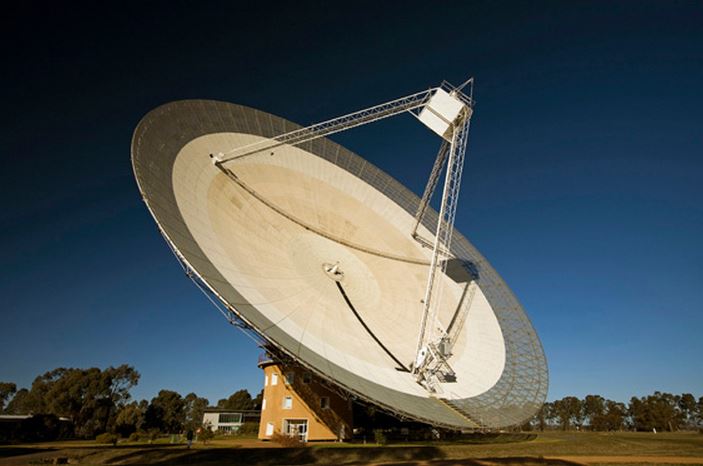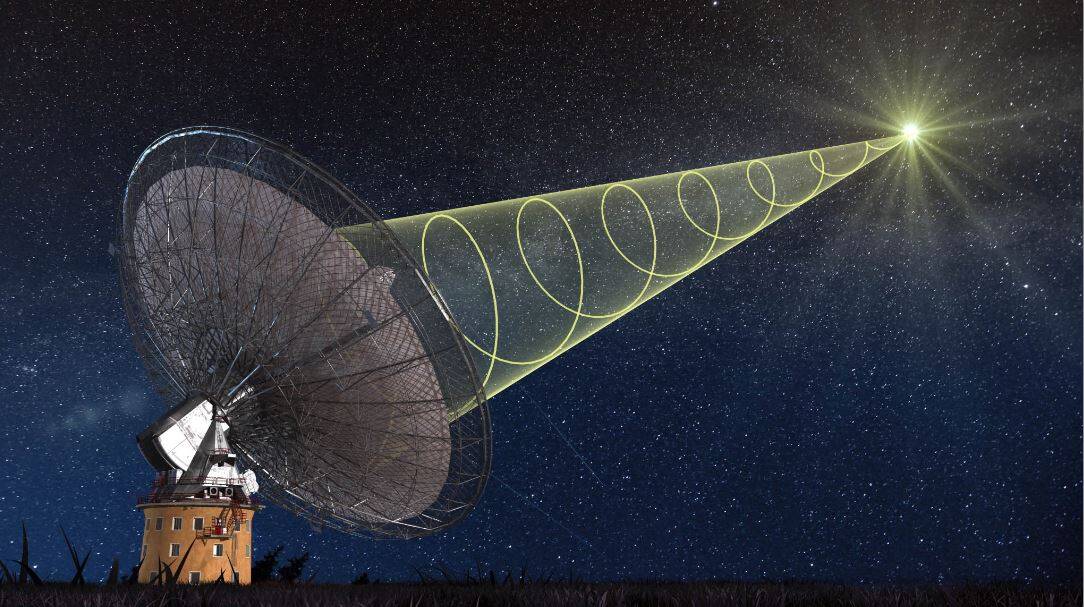Radio dishes have picked up strange radio bursts from space which have a pattern that only makes sense if they came from intelligent aliens, scientists from Germany and Hawaii say.
John Learned, Professor of Physics at the University of Hawaii, said:
“If the pattern is real. It is very, very hard to explain.”
For the first time since 2001, radio telescopes have picked up FRBs (Fast Radio Bursts). An FRB is a transient radio burst from space that lasts only a few thousandths of a second. Nobody knows where they came from, although they are believed to be extragalactic (not from our Milky Way galaxy). Some astrophysicists suggest they could come from nearby stars.

The CSIRO Parkes Radio Telescope in Australia picked up an FRB in November. (Image: parkes.atnf.csiro.au)
Although an FRB only lasts a fraction of a second, it erupts with more energy than our Sun releases in one day.
A repeating pattern that makes no sense
What makes these radio bursts intriguing is that they show a repeating pattern of numbers that do not follow the scientific laws of cosmic physics, scientists say.
The CSIRO Parkes Radio Telescope, 20 kilometres north of the town of Parkes, New South Wales, Australia, captured a ‘live’ FRB in November 2014. Previous FRBs had only been noticed by scientists weeks or months after they were picked up.
According to Prof. Learned, and co-authors Michael Hippke of the Institute for Data Analysis in Neukirchen-Vluyn, and Wilfried F. Domainko of the Max Planck Institutes, both in Germany, who have submitted a paper to arXiv (citation below), all FRB signals have dispersion measures that were found to be in multiples of 187.5.
This suggests that the signals come from sources billions of light years from Earth at distances which are exactly spaced multiples of each other.

A schematic illustration of CSIRO’s Parkes radio telescope receiving the polarised signal from the new ‘fast radio burst’. (Image: csiro.au)
The authors say there is a possibility the source of these signals may be much closer than thought.
Scientists, lay people and alien-enthusiasts have speculated that FRBs could come from distant stars, black holes, or even intelligent alien civilizations.
Learned, Hippke and Domainko wrote:
“We find that FRBs tend to arrive at close to the full integer second, like man-made perytons. If this holds, FRBs would also be man-made. This can be verified, or refuted, with new FRBs to be detected.”
We’ll eventually know where the FRBs come from
The ‘live’ FRB was seen by Emily Petroff, a PhD student at Swinburne University of Technology, Melbourne, Australia.
Ms. Petroff said:
“These bursts were generally discovered weeks, months or even more than a decade after they happened. We are the first to catch one in real time.”
Ms. Petroff explained that one of the big unknowns of FRBs is their distance. Most astrohphysicists believe they come from about 5.5 billion light years away.
She believes it is only a matter of time before their origins are identified. “We’ve set the trap. Now we just have to wait for another burst to fall into it.”
Citation: “Discrete steps in dispersion measures of Fast Radio Bursts,” Michael Hippke, Wilfried F. Domainko, John G. Learned. arXiv:1503.05245 [astro-ph.HE].

